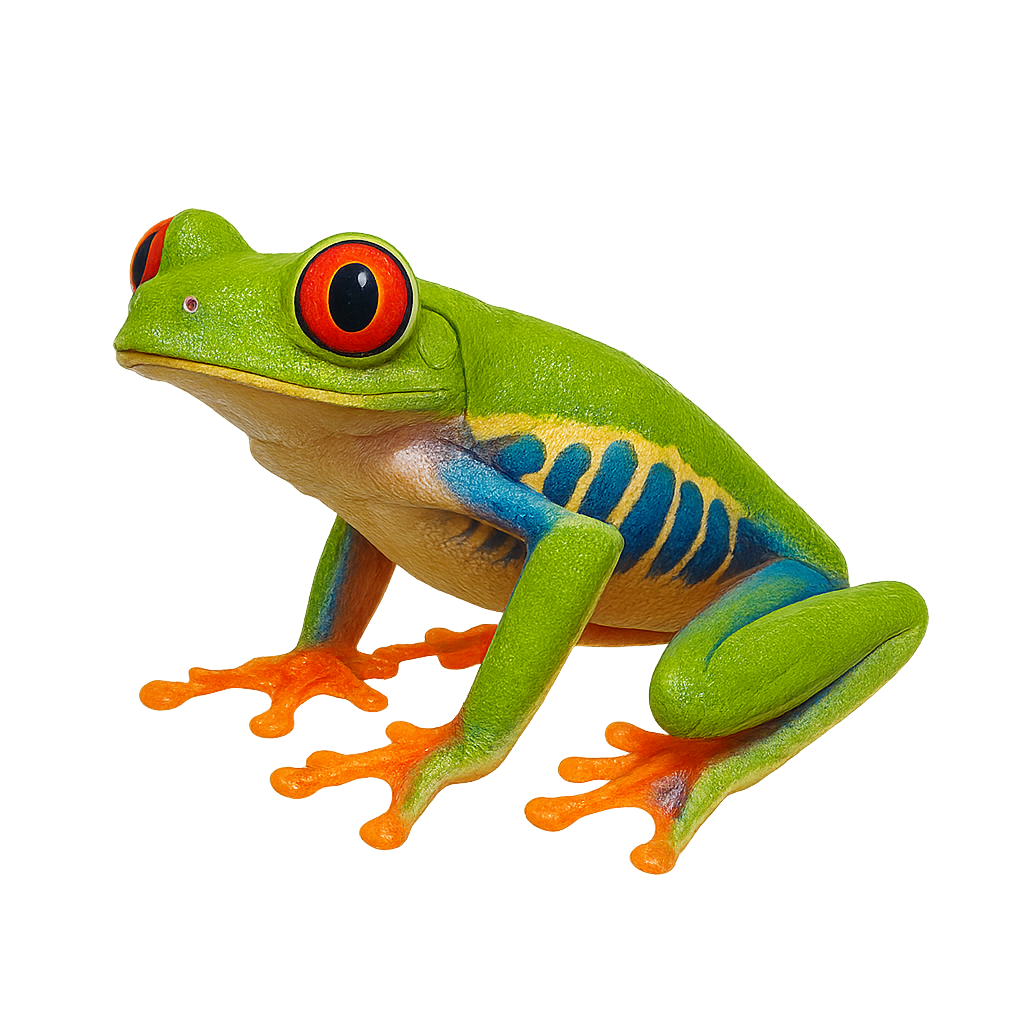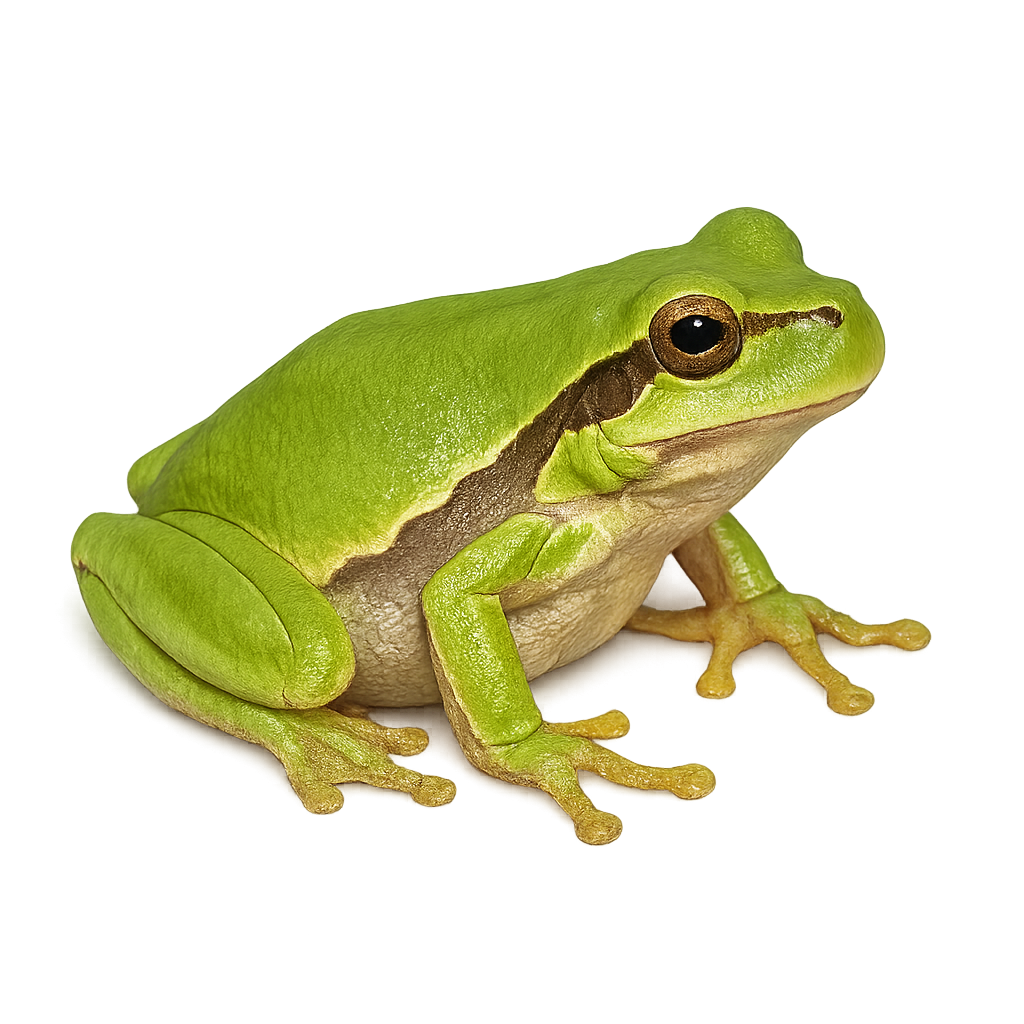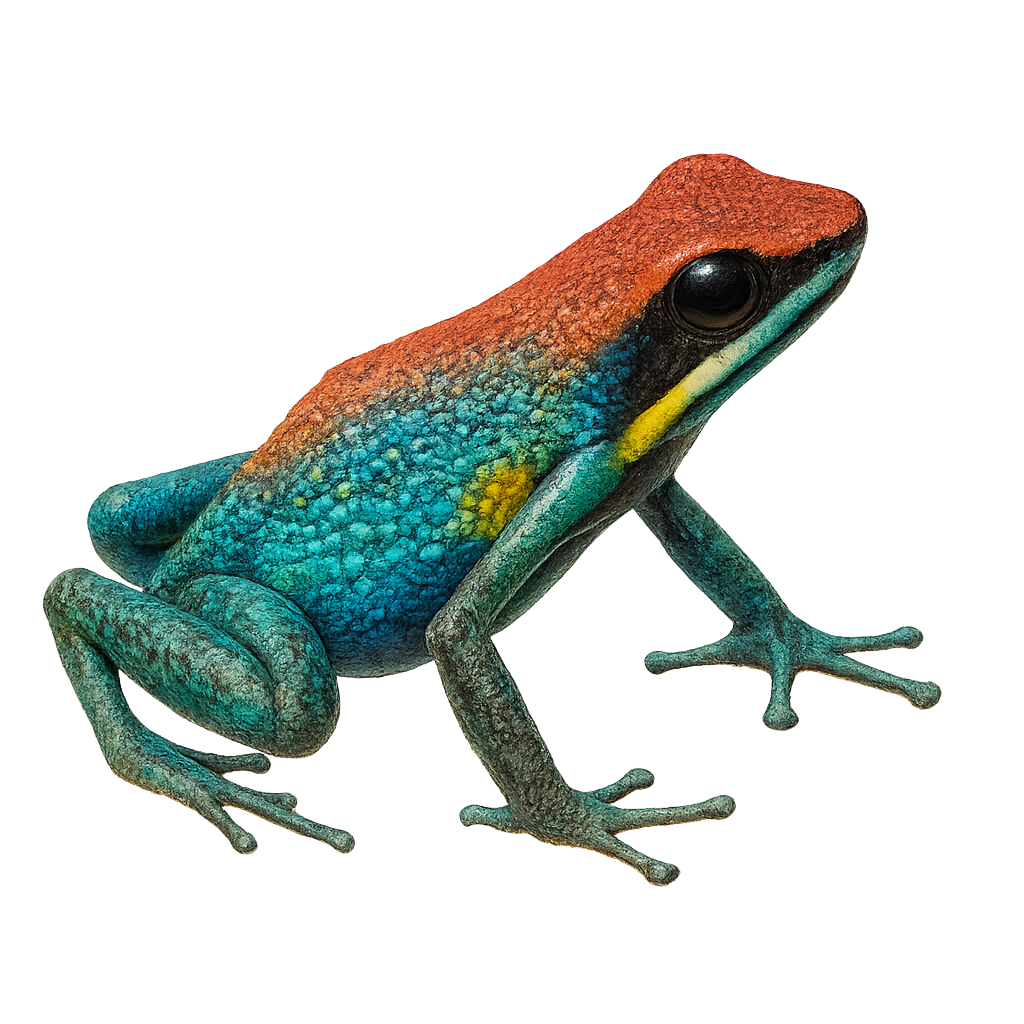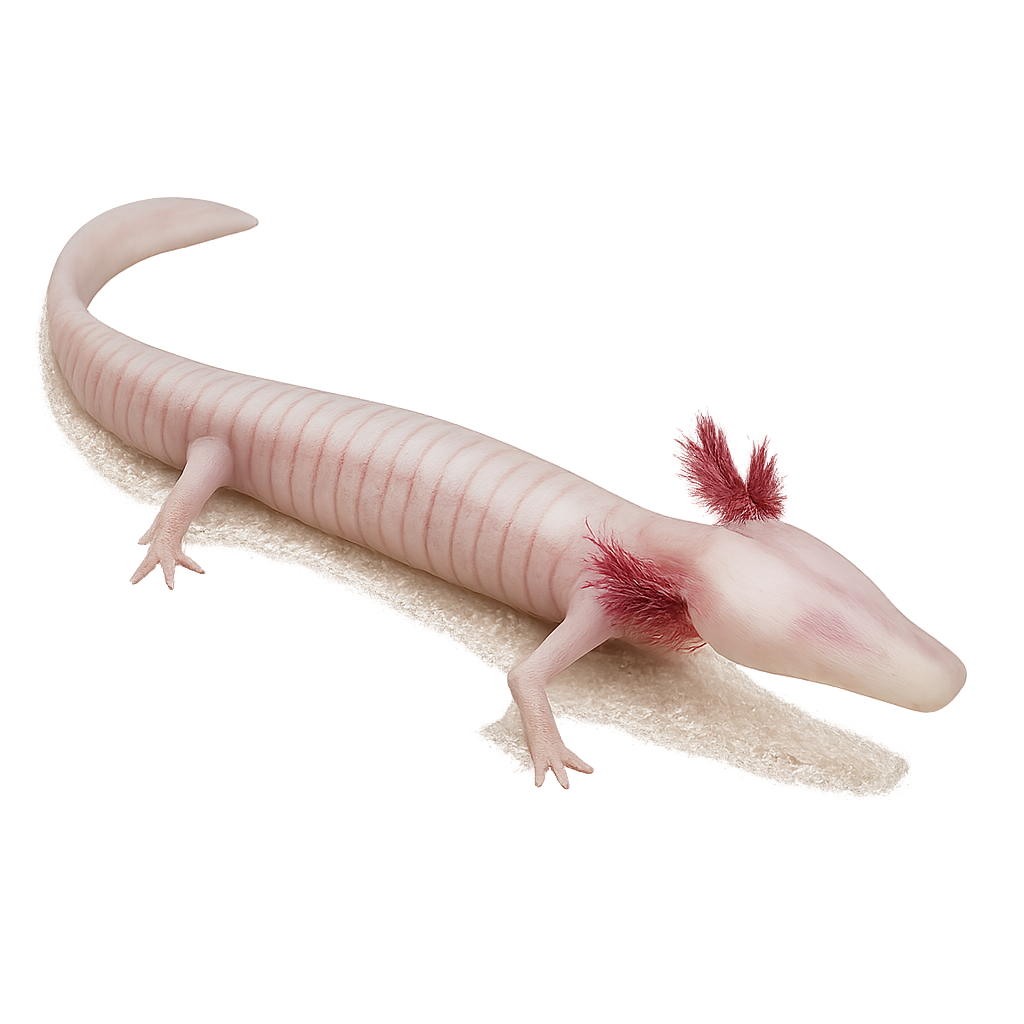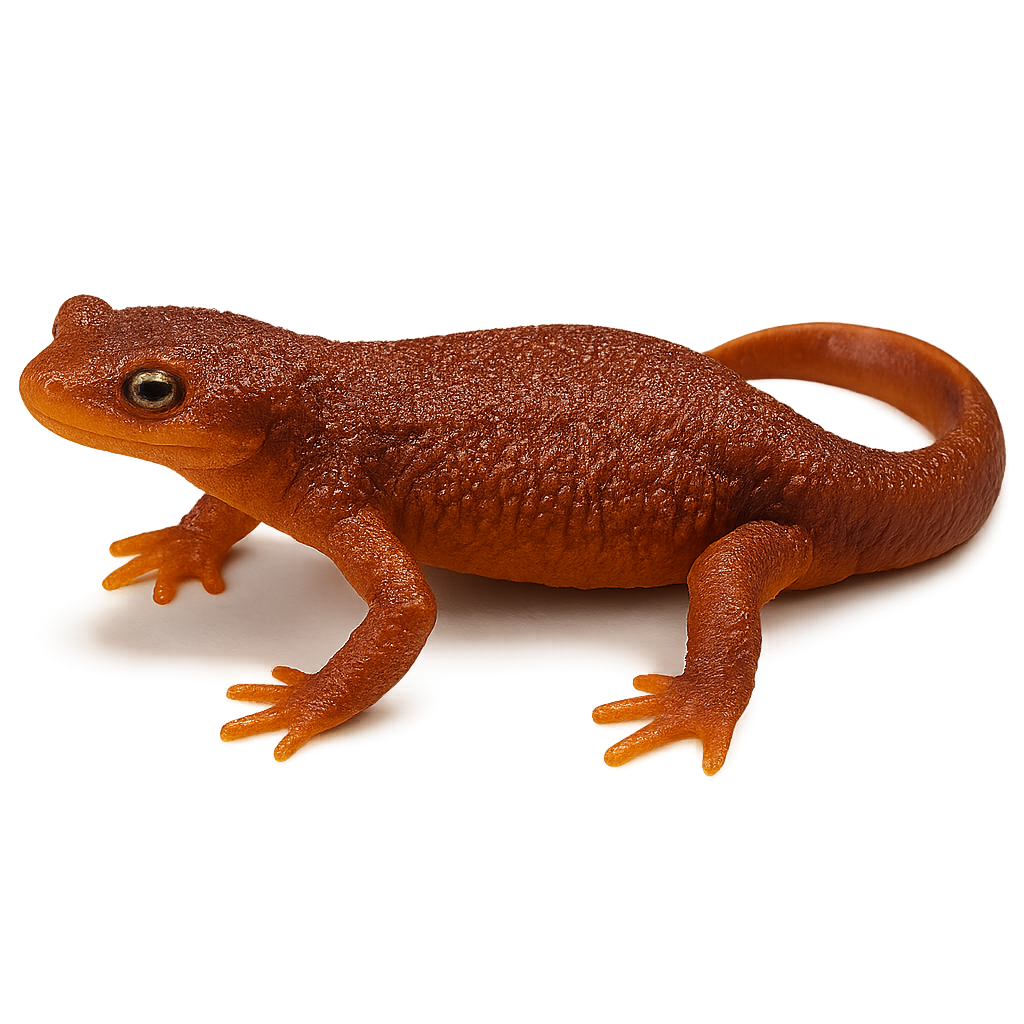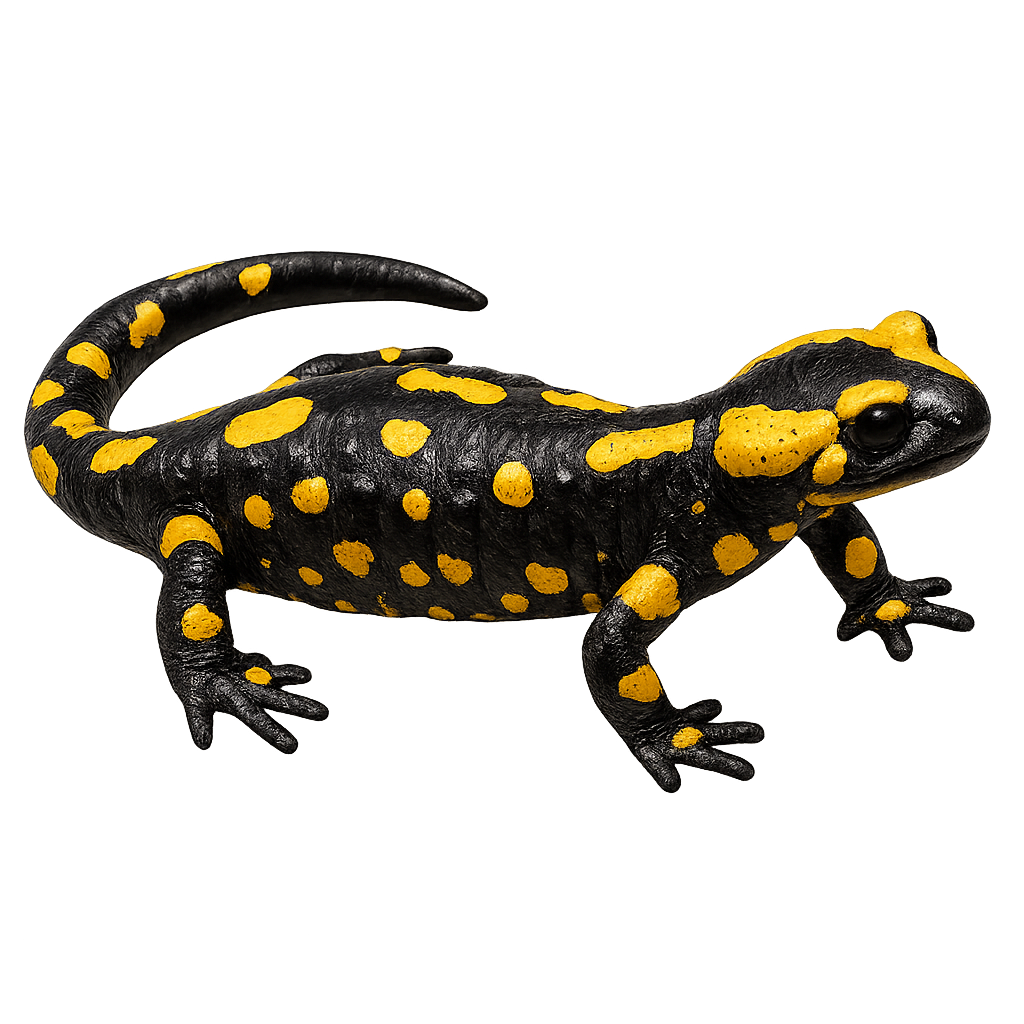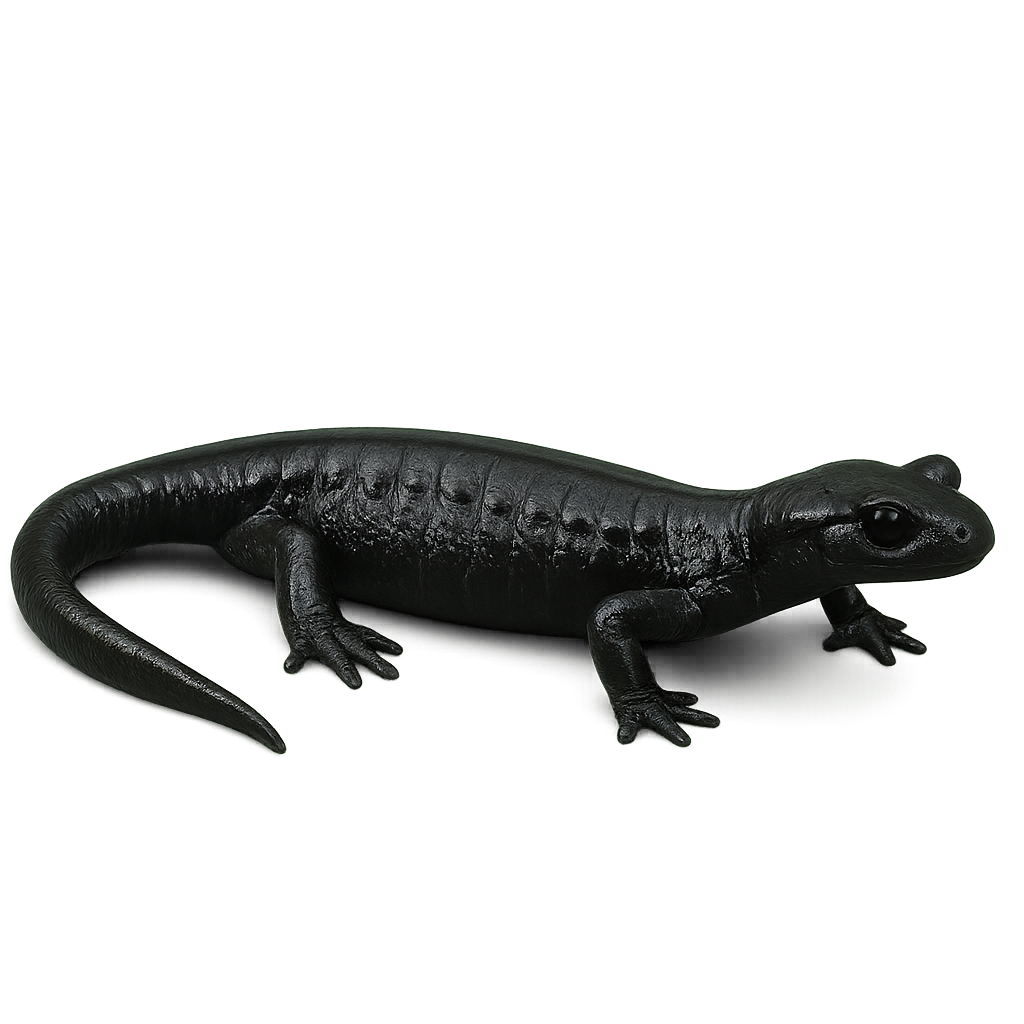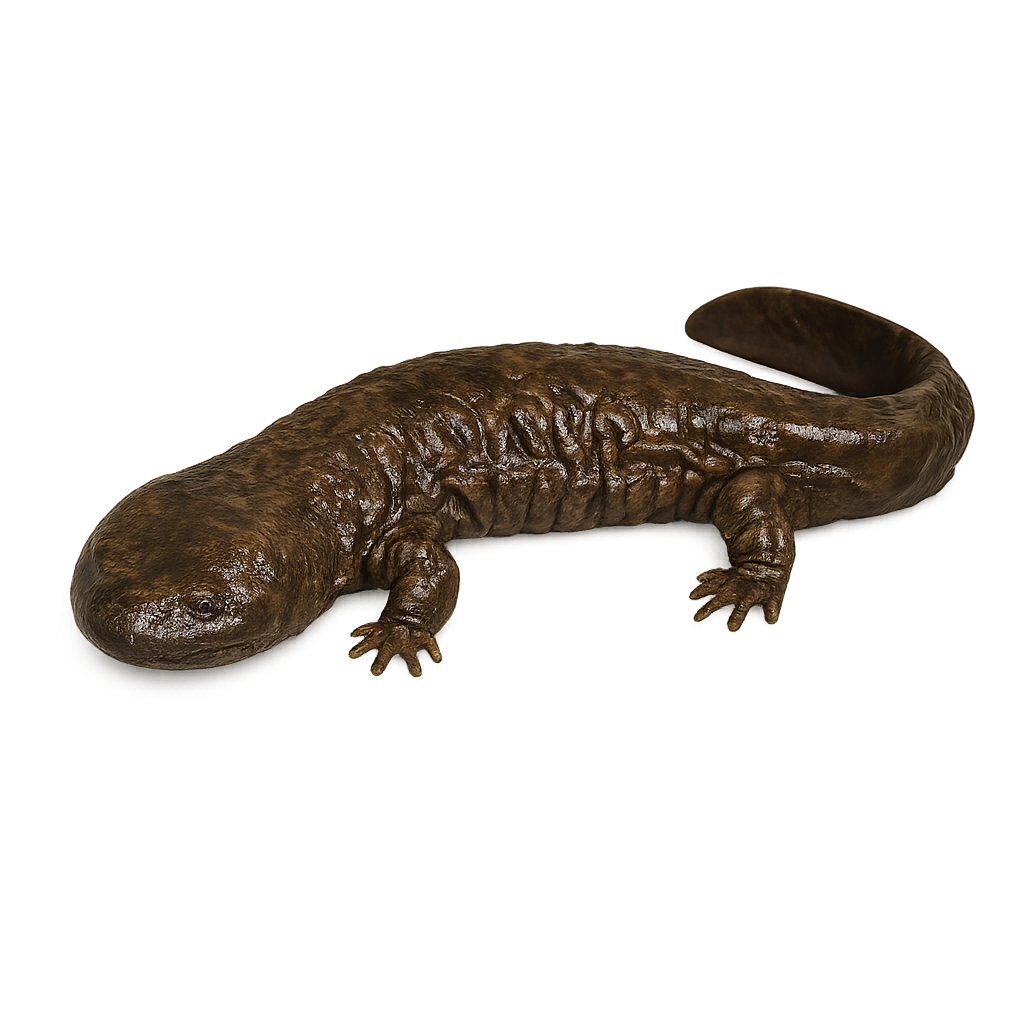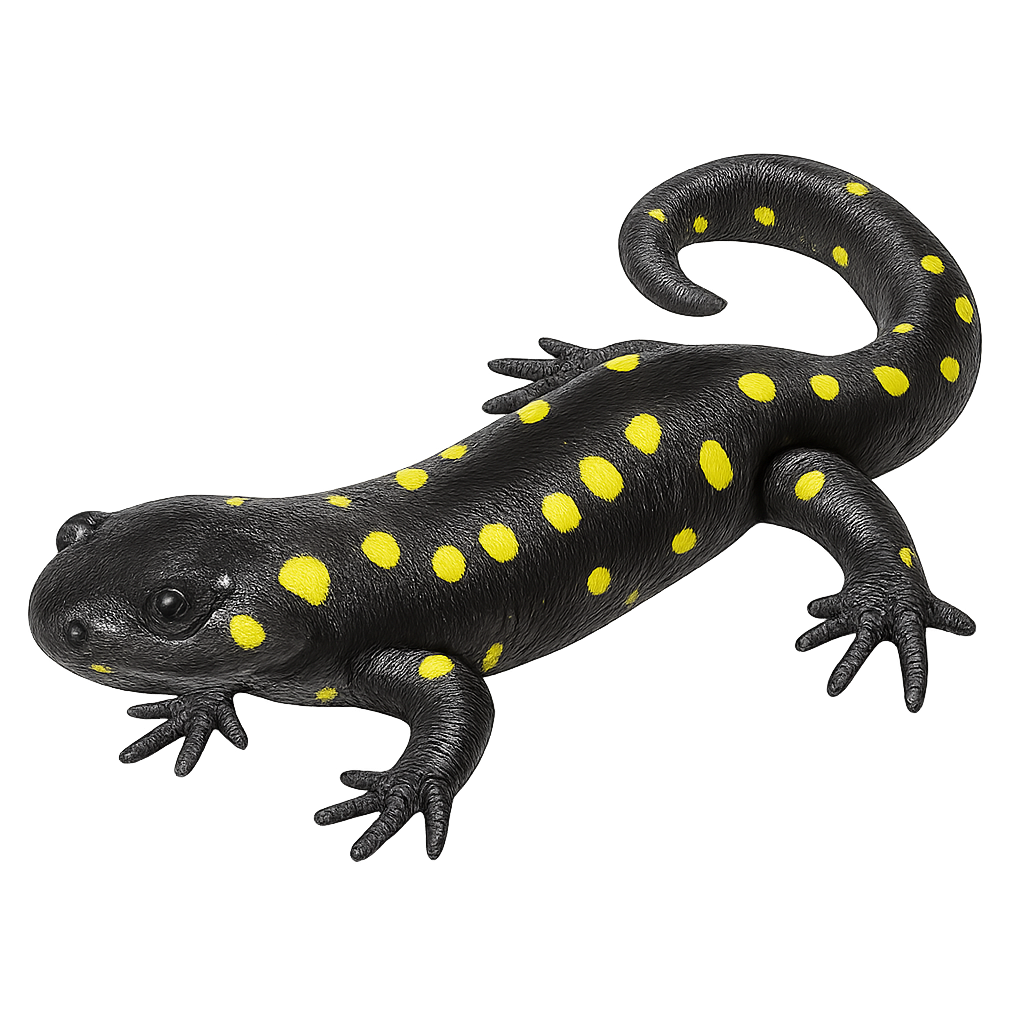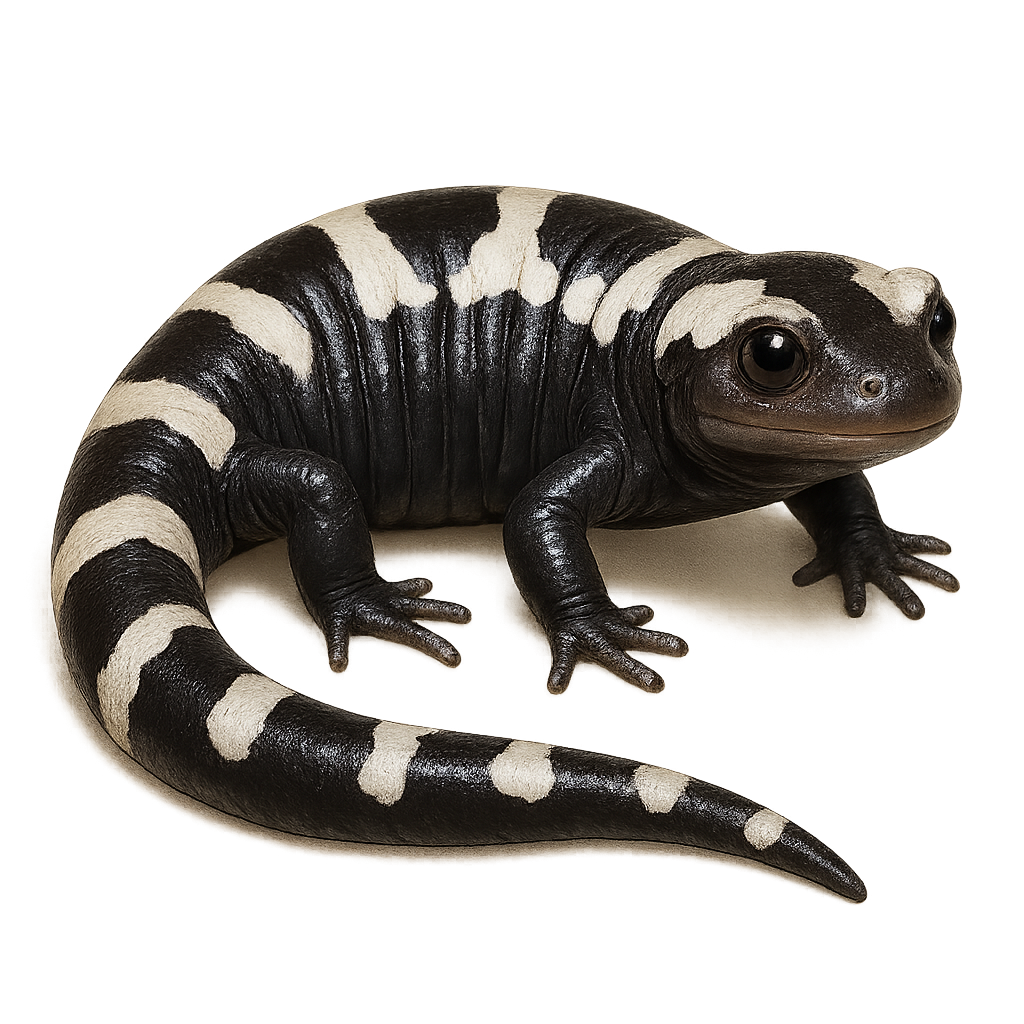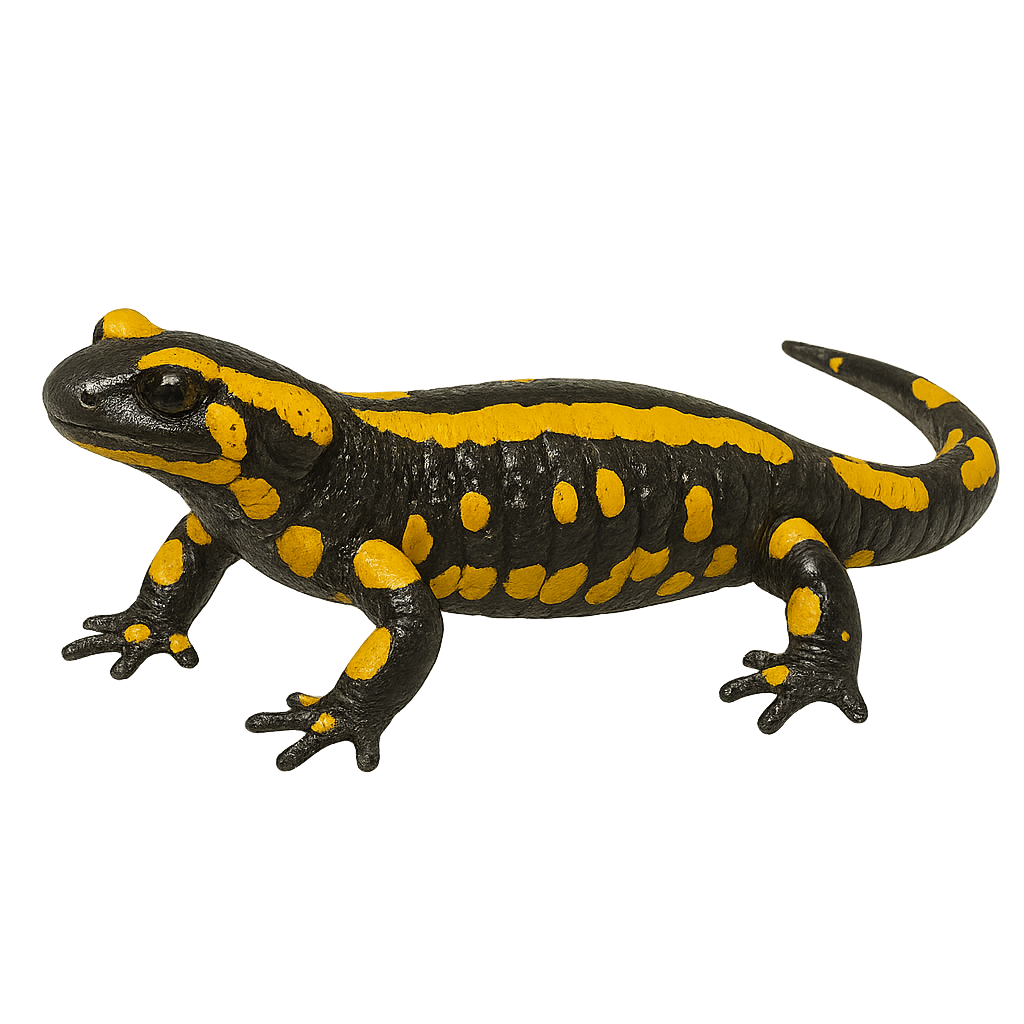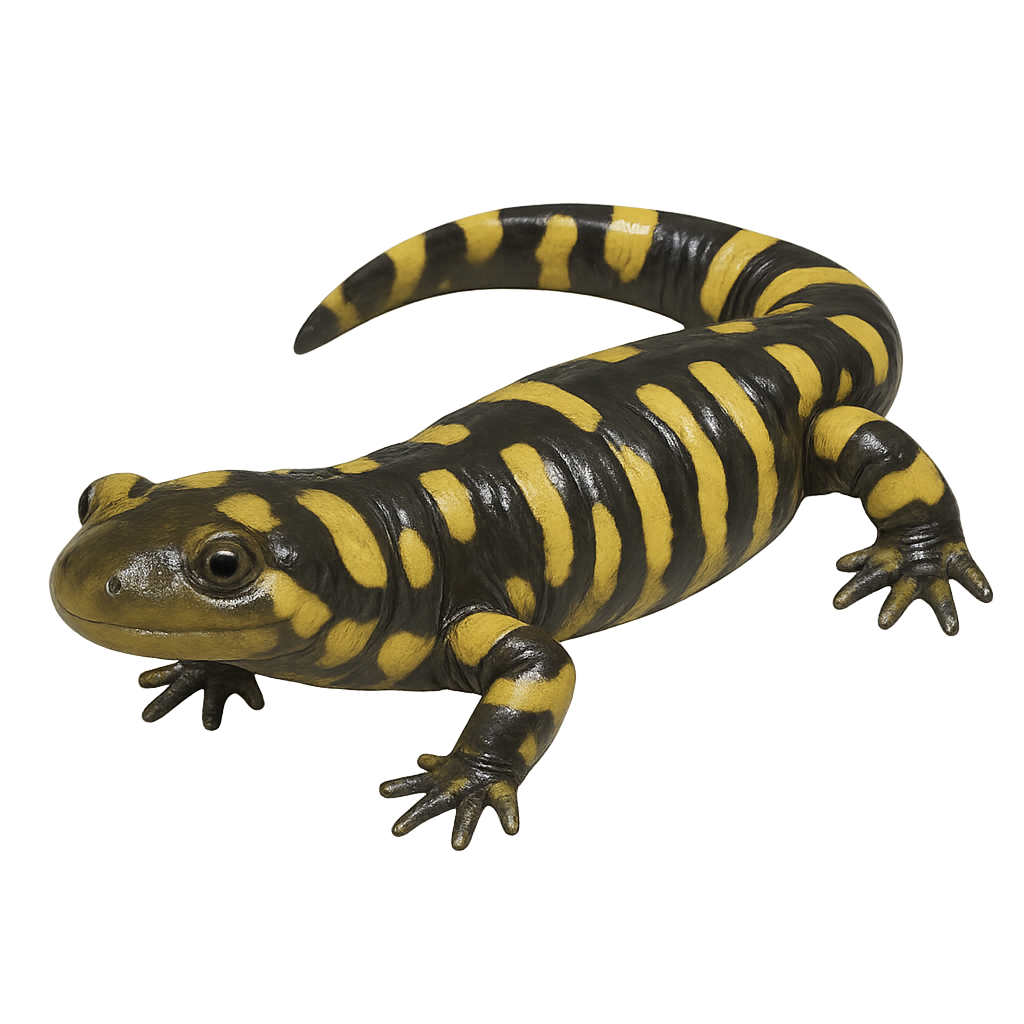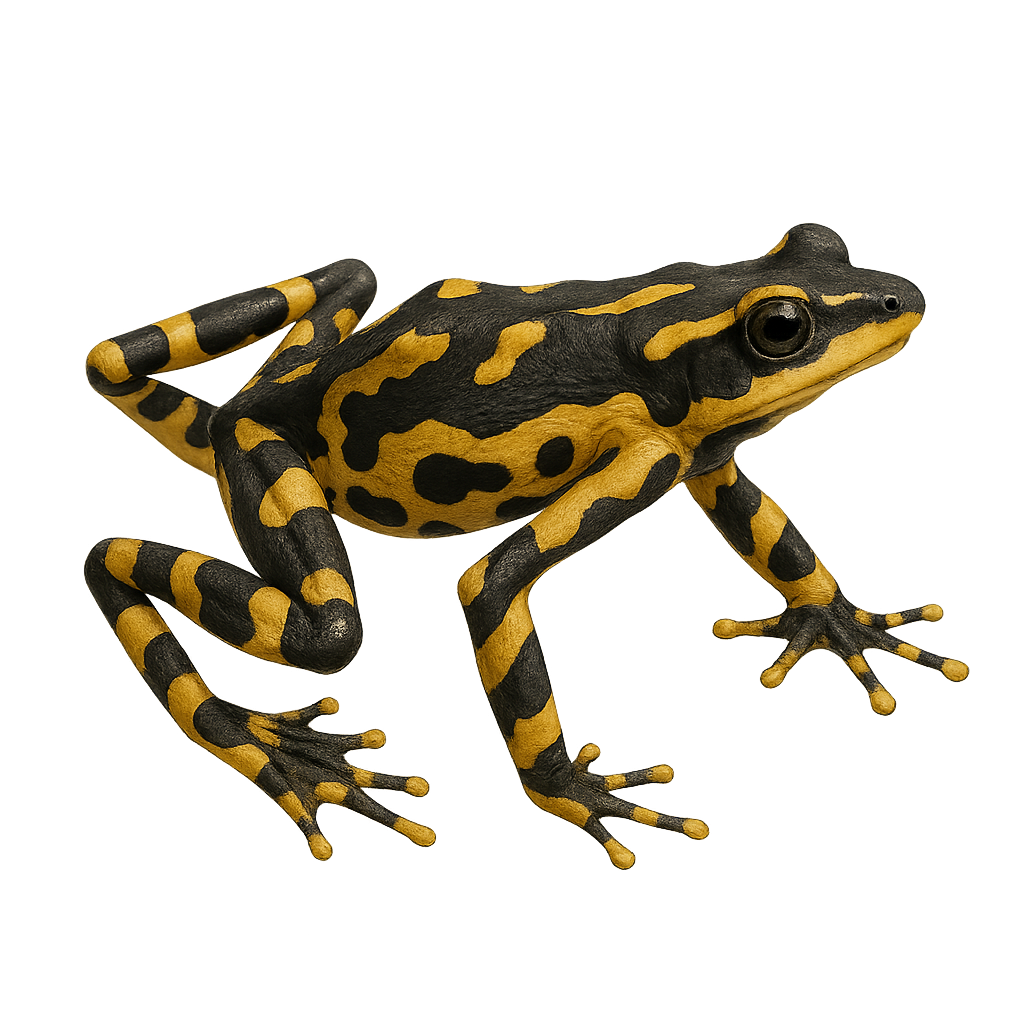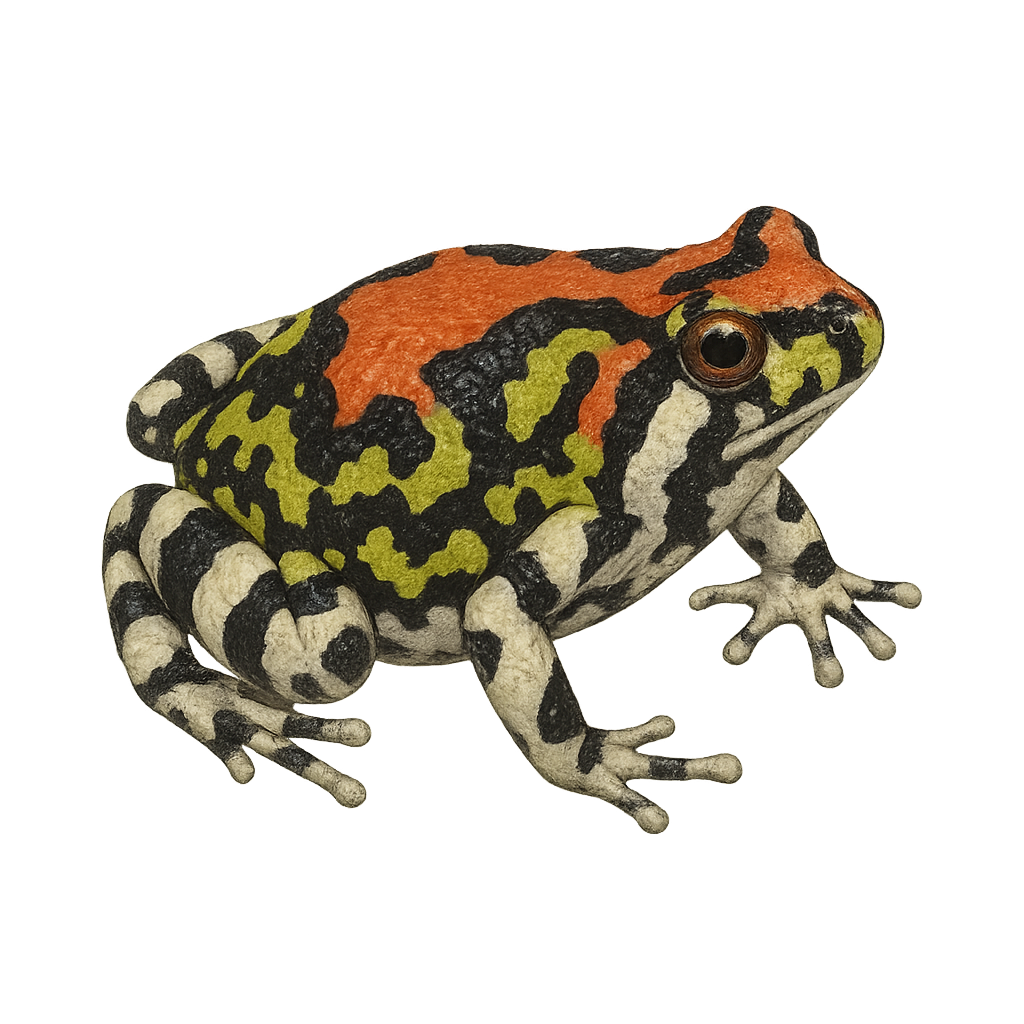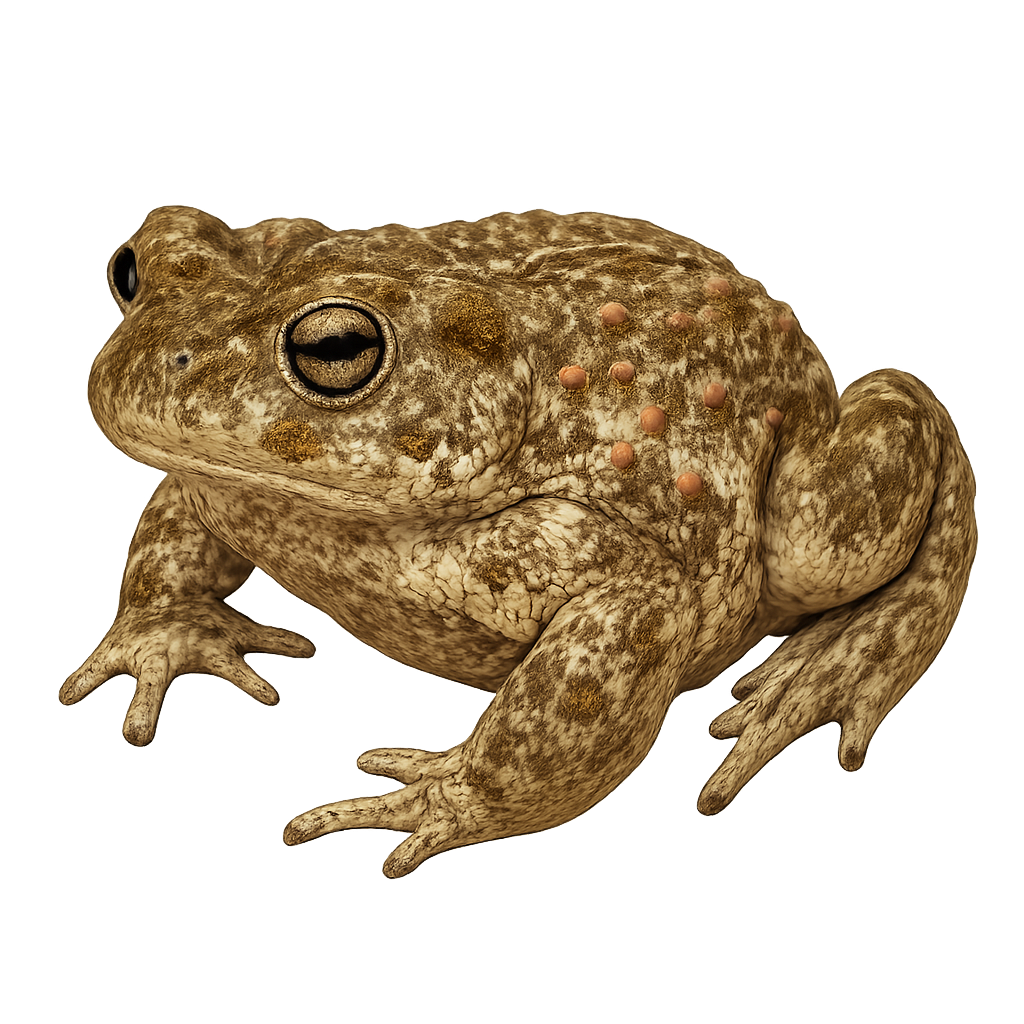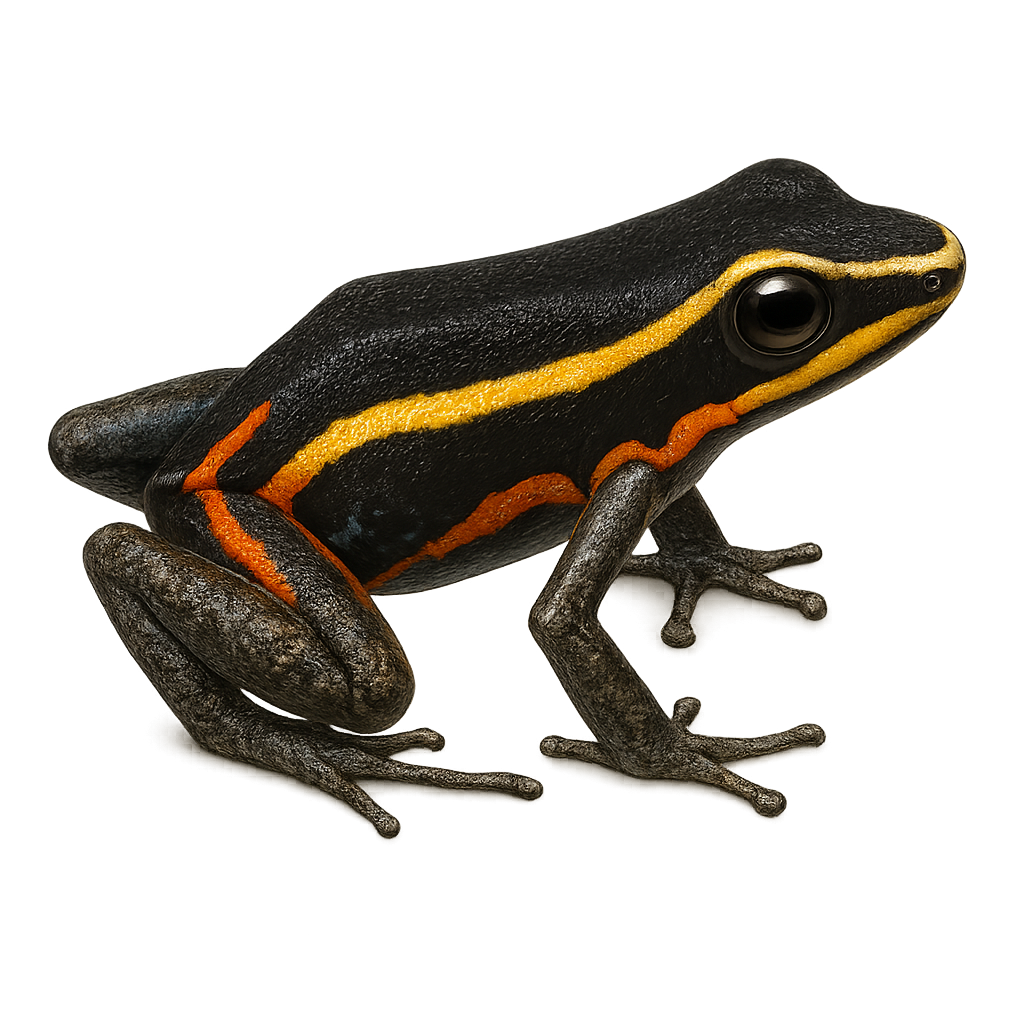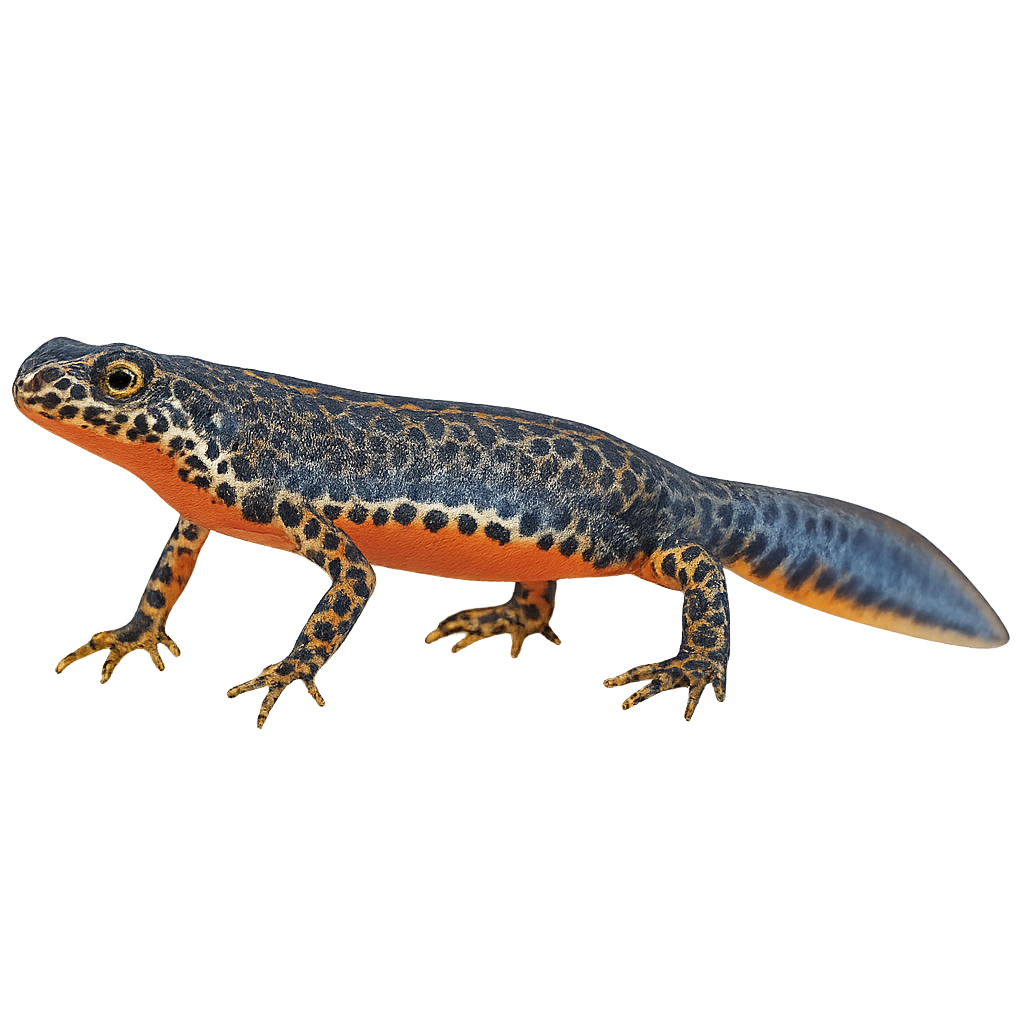The Chirique-Flusse Treefrog, scientifically known as Boana pugnax, is a captivating amphibian species native to the tropical rainforests of South America. It is known for its adaptability to various aquatic environments, from rivers to swamps. Its skin, often green with brown hues, provides excellent camouflage among leaves and branches. Males are noted for their loud calls, used to attract females during the breeding season. This species is primarily nocturnal, feeding on insects and other small invertebrates. Although its conservation status is not currently concerning, habitat destruction poses a potential threat.
The Misfit Leaf Frog, or Agalychnis saltator, is an arboreal frog native to the tropical forests of Central America. It is particularly known for its ability to leap long distances, allowing it to move efficiently between tree branches. Its skin is a bright green, providing excellent camouflage among the foliage. This frog's eyes are red with a vertical pupil, giving it a striking appearance. It is primarily nocturnal, hiding during the day to avoid predators. The leaf frog plays a crucial role in its ecosystem by regulating insect populations and serving as prey for other animals.
The Magnificent Tree Frog, or Litoria splendida, is a species of tree frog endemic to Australia, primarily found in the humid regions of the north. It is distinguished by its bright green color and golden eyes, making it a subject of fascination for herpetologists and nature enthusiasts. Measuring between 7 and 11 cm, this frog has smooth skin and adhesive fingers that allow it to easily climb trees. It is often active at night, feeding on insects and other small invertebrates. Although relatively tolerant of human activity, it is sensitive to environmental changes, particularly deforestation and water pollution.
The European Tree Frog, or Hyla arborea, is a small arboreal frog native to Europe. It is characterized by its smooth skin and bright green color, although some may exhibit shades of brown or gray. Typically measuring between 3 and 5 cm, it has adhesive pads on its fingers, allowing it to climb easily on plants and trees. It is often found near stagnant water bodies, such as ponds and marshes, where it breeds. Its call, a loud croak, is particularly noticeable during the breeding season. Although primarily nocturnal, it can be seen basking in the sun during the day.
The Litoria chloris, commonly known as the Red-eyed Green Treefrog, is a species of arboreal frog native to Australia. It is distinguished by its bright green color and characteristic red eyes. Measuring between 4 and 7 cm, it has webbed feet that allow it to leap agilely from tree to tree. This species is primarily nocturnal and feeds on insects, which it captures with its sticky tongue. It inhabits tropical rainforests, often near water bodies. The green tree frog plays a crucial role in the ecosystem by regulating insect populations. Although currently classified as "least concern" by the IUCN, deforestation and climate change threaten its natural habitat.
The Litoria xanthomera, or Orange-thighed Frog, is a tree-dwelling frog species endemic to Australia, primarily found in the tropical regions of northeastern Queensland. It is characterized by its smooth skin and bright green color, often dotted with yellow spots, which gives it its name. Typically measuring between 4 and 6 cm in length, this frog is nocturnal and commonly found in humid rainforests near water bodies. It is known for its distinctive call, used to attract mates during the rainy season. Although its population is stable, it is sensitive to environmental changes and habitat loss.
The Ecuador poison frog, Ameerega bilinguis, is a brightly colored frog species belonging to the Dendrobatidae family. It is primarily found in the humid tropical forests of Ecuador and Colombia. Known for its vivid colors, typically a mix of black, blue, and yellow, this frog uses its appearance to warn potential predators of its toxicity. It measures about 2 to 3 cm in length. Ameerega bilinguis are diurnal and primarily feed on small insects. Their skin secretes toxic alkaloids, a common trait among frogs of this family. They play a crucial role in the ecosystem by controlling insect populations and serving as prey for certain predators immune to their poison.
The Rio Madeira poison frog, Adelphobates quinquevittatus, is a small, brightly colored frog native to the rainforests of South America, primarily in Peru and Brazil. Known for its distinctive stripes, usually black and yellow, this species thrives in the humid, shaded areas of tropical forests, feeding on insects and other small invertebrates. Like many poison dart frogs, it secretes potent toxins through its skin, serving as an effective deterrent against predators. It is often found near streams or ponds, where it lays its eggs. The tadpoles develop in water before transforming into adult frogs.
Plethodon albagula, commonly known as the Western Slimy Salamander, is an amphibian species in the Plethodontidae family. It is primarily found in the wooded regions of central United States, particularly in moist and shaded areas. This salamander is characterized by its smooth and moist skin, often black with white or grayish spots on its back. It typically measures between 10 and 15 cm in length. Nocturnal, it primarily feeds on insects and other small invertebrates. Unlike many other salamander species, it lacks lungs and breathes through its skin. Its reproduction is terrestrial, and it lays its eggs in moist places, where the larvae develop without an aquatic phase.
The Proteus anguinus, commonly known as the olm, is a fascinating amphibian inhabiting the karst caves of the Dinaric region in Europe. This curious animal is adapted to underground life, with depigmented skin and atrophied eyes, rendering its vision almost nonexistent. It typically measures between 20 and 30 centimeters in length and has an elongated, eel-like body with reduced limbs. Its respiration is ensured by feathery external gills, allowing it to live in oxygen-poor underground waters. The Proteus anguinus primarily feeds on small aquatic invertebrates. Its exceptional longevity, reaching up to 100 years, and its ability to survive without food for several years make it a captivating subject of study for scientists.
The California Newt, Taricha torosa, is a fascinating amphibian native to the west coast of the United States. It is distinguished by its rough skin and bright coloration, ranging from dark brown on the back to bright orange on the belly. This coloration serves as a warning to potential predators, as it secretes a powerful toxin called tetrodotoxin. Typically measuring between 12 and 20 cm, it primarily inhabits moist forests, grasslands, and riparian zones. During the breeding season, it migrates to ponds and streams to lay its eggs. Although primarily terrestrial, it returns to water to breed. Its ability to regenerate body parts makes it an interesting subject of study for scientists.
The Corsican Salamander, or Salamandra corsica, is an amphibian endemic to the island of Corsica. It is characterized by its black skin adorned with irregular yellow spots, a pattern that varies among individuals. This salamander prefers humid and shaded habitats, such as oak and pine forests, as well as rocky areas near watercourses. It is primarily nocturnal, hiding under stones or in crevices during the day. Its reproduction is viviparous, with females giving birth to aquatic larvae. Although its population is stable, it is sensitive to environmental changes and water pollution.
The Lanza's Alpine Salamander, or Salamandra lanzai, is a rare and fascinating species of salamander endemic to the Cottian Alps, straddling France and Italy. It is characterized by its glossy black skin, often dotted with small yellow spots. Adapted to alpine environments, it primarily inhabits rocky and humid areas at altitudes ranging from 1200 to 2800 meters. This salamander is viviparous, meaning it gives birth to fully formed young after a gestation period that can last several months. Due to its restricted habitat and sensitivity to environmental changes, it is classified as vulnerable by the IUCN. Its behavior is rather suspicious, and it is mainly nocturnal.
The Eastern hellbender is one of the largest salamander species in the world, growing up to 75 cm in length. It primarily inhabits clear rivers and streams in the United States, where it hides among rocks and feeds on small aquatic invertebrates. This amphibian is particularly sensitive to water pollution and habitat loss. Due to these threats, the Eastern hellbender is classified as a vulnerable species.
The Chinese giant salamander, Andrias davidianus, is the largest amphibian in the world, reaching up to 1.8 meters in length. It primarily inhabits mountain rivers and lakes in China. Its skin is rough and dark brown, allowing it to blend into its aquatic surroundings. It is mainly nocturnal and feeds on fish, crustaceans, and insects. Unfortunately, this species is critically endangered due to habitat loss and water pollution. The Chinese giant salamander is also threatened by illegal hunting for its meat, considered a delicacy.
The Japanese giant salamander is one of the largest salamanders in the world, reaching lengths of up to 1.5 meters. It lives in cold rivers and mountain streams in Japan, primarily in the regions of Honshu and Shikoku. This nocturnal predator feeds mainly on fish, crustaceans, and aquatic insects. Due to its imposing appearance and secretive behavior, this salamander is often difficult to spot. It is protected due to habitat loss and river pollution.
The Coastal Giant Salamander, Dicamptodon tenebrosus, is a fascinating species of salamander primarily inhabiting the moist forests of the Pacific Northwest in North America. Known for its large size, it can grow up to 35 cm in length. Its skin is typically dark brown with lighter marbled patterns, allowing it to blend effectively into its natural surroundings. This salamander is mostly nocturnal, feeding on invertebrates, small fish, and occasionally small mammals. It plays a crucial role in the ecosystem by regulating insect populations and serving as prey for other animals. Although relatively tolerant of human disturbances, habitat destruction poses a threat to its survival.
The spotted salamander is an urodele amphibian, 15–25 cm long, with a jet-black back marked by bright yellow spots. It inhabits humid deciduous forests and migrates by night to ephemeral pools in early spring to breed.
The Ambystoma opacum, or marbled salamander, is a fascinating amphibian native to North America. It is distinguished by its modest size, typically between 9 and 11 cm, and its unique black and white coloration, giving it a marbled appearance. This salamander prefers humid habitats such as deciduous forests and marshy areas. It is nocturnal, meaning it is primarily active at night. The marbled salamander is oviparous, laying its eggs in moist depressions before the autumn rains. It is known for its ability to hide under leaves and debris to avoid predators. Although its conservation status is concerning, it is not currently endangered.
The Alpine salamander is a terrestrial amphibian of the Alpine arc, with a shiny black body and short limbs. It inhabits humid montane forests and alpine meadows above 700 m, feeding on insects and small invertebrates. During the breeding season, males and females meet on damp ground to mate, without returning to water.
The Spotted Salamander is an amphibian primarily found in forests and wetlands across Europe, particularly in France, Spain, and Germany. It typically measures between 15 and 25 cm in length, although some specimens can reach up to 30 cm. Its body is black with bright yellow spots, making it easily identifiable. The Spotted Salamander is a nocturnal and terrestrial animal, hiding during the day under rocks or in holes in the ground to protect itself from the heat. It is carnivorous and feeds primarily on insects, worms, small crustaceans, and other invertebrates. While it remains relatively abundant in certain regions, this species is threatened by water pollution, habitat destruction, and climate change.
The tiger salamander is a robust terrestrial amphibian of 15–25 cm (sans la queue), with an olive to brown body marked by yellow blotches and a pale throat. A nocturnal and crepuscular species inhabiting woodlands, damp meadows and pond margins, it feeds on insects, worms and molluscs. During breeding, males produce low underwater calls to attract females to egg-laying sites.
The California tiger salamander is a stout-bodied salamander 15–20 cm long, with a black dorsum marked by yellow or cream spots. Endemic to grasslands, agricultural lands and open woodlands of central and coastal California, it depends on fishless temporary ponds to breed, migrating nocturnally from upland burrows. Adults shelter in rodent burrows during dry periods.
The Santander poison frog is a small, brightly colored frog endemic to the humid tropical forests of Colombia. It is distinguished by its shiny skin, often a striking blue with black patterns, making it a fascinating specimen for herpetologists and nature enthusiasts. This species is known for its territorial behavior and its ability to produce powerful toxins, used as a defense mechanism against predators. It primarily inhabits dense, humid undergrowth, where it feeds on insects and other small invertebrates. Its survival is threatened by deforestation and the loss of its natural habitat, making it vulnerable according to IUCN criteria.
Excidobates captivus is a species of poison dart frog endemic to the humid rainforests of Peru. This small amphibian, measuring about 2 to 3 cm, is known for its bright coloration, typically a mix of yellow, black, and sometimes blue, which warns predators of its toxicity. Its skin secretes potent alkaloids, used by local populations to poison arrows. It primarily inhabits dense undergrowth, feeding on small insects and invertebrates. Reproduction usually occurs during the rainy season when conditions are ideal for tadpole development. Although its population is stable, deforestation and collection for the pet trade threaten its natural habitat.
The Atelopus varius, commonly known as the variable harlequin toad, is a brightly colored toad species native to the tropical rainforests of Central America, primarily in Costa Rica and Panama. This toad is renowned for its vivid colors and distinctive patterns, which vary significantly from one individual to another. Colors can range from bright yellow to green, with contrasting black spots. Unfortunately, this species is critically endangered, mainly due to habitat loss, fungal diseases, and climate change. Conservation efforts are underway to protect this unique amphibian and its natural habitat.
The Scaphiophryne gottlebei is a frog species endemic to Madagascar, notable for its vibrant colors and limited habitat. It displays a complex pattern of red, green, and black on its back, allowing it to blend effectively among the forest's dead leaves. This species is primarily found in the dry forests and rocky areas of Isalo National Park. Known for its discreet behavior, it can quickly hide under leaves or in crevices. The Scaphiophryne gottlebei is classified as endangered by the IUCN due to the loss of its natural habitat.
The yellow-bellied toad is a small amphibian 30–40 mm long, with olive-brown dorsal coloration and bright yellow belly mottled with black. It inhabits temporary shallow wetlands at forest edges and meadows, feeding on insects, spiders and worms. During breeding, males emit high-pitched calls near shallow pools and females lay clusters of eggs on aquatic vegetation.
The Painted Poison Frog, Ameerega picta, is a brightly colored frog species belonging to the Dendrobatidae family. It is primarily found in the humid tropical forests of South America, particularly in Brazil, Guyana, and Suriname. This frog is distinguished by its vibrant skin, often adorned with black and yellow or red patterns, allowing it to blend effectively into its natural environment. It is diurnal and primarily feeds on small insects. Although its coloration serves as a warning to potential predators, it is not as toxic as some other species in its family. The Spot‑legged poison frog plays an important role in the ecosystem by regulating insect populations and serving as prey for other animals.
The Alpine newt is a small urodele amphibian, 9–13 cm long, with a bright olive back and orange belly. It inhabits ponds, pools, and wooded wetlands across temperate Europe. During the breeding season, males develop a colored tail crest and perform a nuptial dance to attract females.



